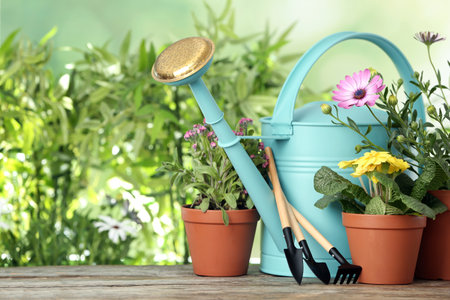1. Getting Started with Organic Gardening
Organic gardening is all about growing your own food in a natural and eco-friendly way—without using synthetic fertilizers, pesticides, or herbicides. It’s a great option for families who want fresh, healthy produce straight from their backyard or balcony, and it helps protect the environment at the same time.
What Does “Organic” Mean?
When you grow organically, you’re working with nature instead of against it. This means feeding your soil with compost and natural materials, encouraging beneficial insects, rotating crops to keep soil healthy, and avoiding any chemical shortcuts. Organic gardening focuses on creating a balanced ecosystem where plants can thrive naturally.
Why Choose Organic Gardening?
Growing vegetables without chemicals has many benefits—not just for your health but also for your community and planet. Here are some of the top reasons people choose organic:
| Benefit | Description |
|---|---|
| Healthier Produce | No chemical residues on your fruits and veggies. |
| Better for the Environment | Reduces pollution and protects local ecosystems. |
| Supports Pollinators | Encourages bees, butterflies, and other helpful insects. |
| Saves Money Over Time | Homemade compost and seed-saving can lower costs. |
| Improves Soil Health | Nurtures long-term soil fertility through natural methods. |
Planning Your Organic Garden
You don’t need a big yard to start an organic garden. Whether you have a spacious backyard or just a sunny balcony, you can grow fresh veggies with the right planning. Start by thinking about what space you have available and how much sunlight it gets each day (most vegetables need at least 6 hours of sun).
Choosing Your Garden Type
| Garden Type | Best For | Notes |
|---|---|---|
| Backyard In-Ground Beds | Larger spaces | Great for rotating crops and growing a variety of veggies. |
| Raised Beds | Poor soil areas or better drainage | Easier to manage weeds and control soil quality. |
| Container Gardens | Balconies, patios, small yards | Portable and easy to manage; ideal for beginners. |
Selecting What to Grow
If youre new to organic gardening, start simple. Choose easy-to-grow vegetables like tomatoes, lettuce, radishes, carrots, zucchini, or herbs like basil and parsley. Pick what your family likes to eat—you’ll be more motivated to care for it and enjoy the harvest!
Pro Tip:
Start small! A few containers or one raised bed can give you plenty of fresh produce without feeling overwhelming.
The journey into organic gardening begins with understanding what it means to grow naturally and making thoughtful choices about where and how youll plant your garden. With some planning and patience, youll be harvesting your own chemical-free veggies before you know it!
2. Soil Health and Composting
Healthy soil is the foundation of a thriving organic vegetable garden. Instead of using synthetic fertilizers, focus on building soil thats full of life and nutrients using natural methods. This includes composting, adding organic amendments, and understanding the structure and pH of your soil.
Understanding Your Soil
Before planting, its important to know what kind of soil you have. Most soils fall into one of three categories: sandy, clay, or loamy. Heres a quick comparison:
| Soil Type | Drainage | Nutrient Holding | Best Use Tips |
|---|---|---|---|
| Sandy | Drains quickly | Poor nutrient retention | Add organic matter to improve fertility |
| Clay | Poor drainage | High nutrient holding | Loosen with compost and sand to improve texture |
| Loamy | Well-balanced | Good nutrient holding | Ideal for most vegetables; maintain with compost |
The Importance of Soil pH
Soil pH affects how well your plants can absorb nutrients. Most vegetables grow best in slightly acidic to neutral soil (pH 6.0–7.0). You can test your soil using an at-home kit from a garden center. If your pH is off, adjust it naturally:
- To raise pH (make less acidic): Add garden lime.
- To lower pH (make more acidic): Use elemental sulfur or peat moss.
Making Your Own Compost
Composting is one of the easiest and most effective ways to enrich your garden soil. It turns kitchen scraps and yard waste into dark, crumbly material that’s full of nutrients.
What to Compost:
- Browns (carbon-rich): dry leaves, straw, cardboard, newspaper.
- Greens (nitrogen-rich): fruit and veggie scraps, coffee grounds, grass clippings.
- Avoid: meat, dairy, oily foods, pet waste.
Tips for Good Compost:
- Aim for a balance of greens and browns (roughly 1 part green to 2 parts brown).
- Keep it moist like a wrung-out sponge.
- Turn the pile weekly to add air and speed up decomposition.
Natural Soil Amendments
If your soil needs a boost beyond compost, try these organic amendments:
| Amendment | Main Benefit | When to Use |
|---|---|---|
| Worm Castings | Adds beneficial microbes and nutrients | Mild fertilizer; use anytime during growing season |
| Kelp Meal | Adds trace minerals and growth hormones | Mix into soil before planting or as top dressing mid-season |
| Bone Meal | Adds phosphorus for root growth and flowering | Add before planting root crops or flowering vegetables like tomatoes or peppers |
| Blood Meal | Adds nitrogen for leafy growth | Use early in the season for leafy greens like lettuce or spinach |
A Living Soil Means Healthy Plants
Your goal is to build living soil full of microbes, fungi, earthworms, and other beneficial organisms. These natural helpers break down organic matter and make nutrients available to your plants—no chemicals needed. With a little care and consistency, youll create a vibrant ecosystem right under your feet that supports strong, healthy vegetable growth all season long.
